Sometimes, you may need to measure distance, but you don’t have a ruler or tape measure handy. In these situations, the iOS app to measure distance would come in handy. We’ve rounded up the best iPhone and iPad apps to measure distance here. There are measurement tools here to meet all your measurement needs. We’ve got them all here, from AR camera-based tools to satellite image trackers to something as simple as an on-screen ruler.
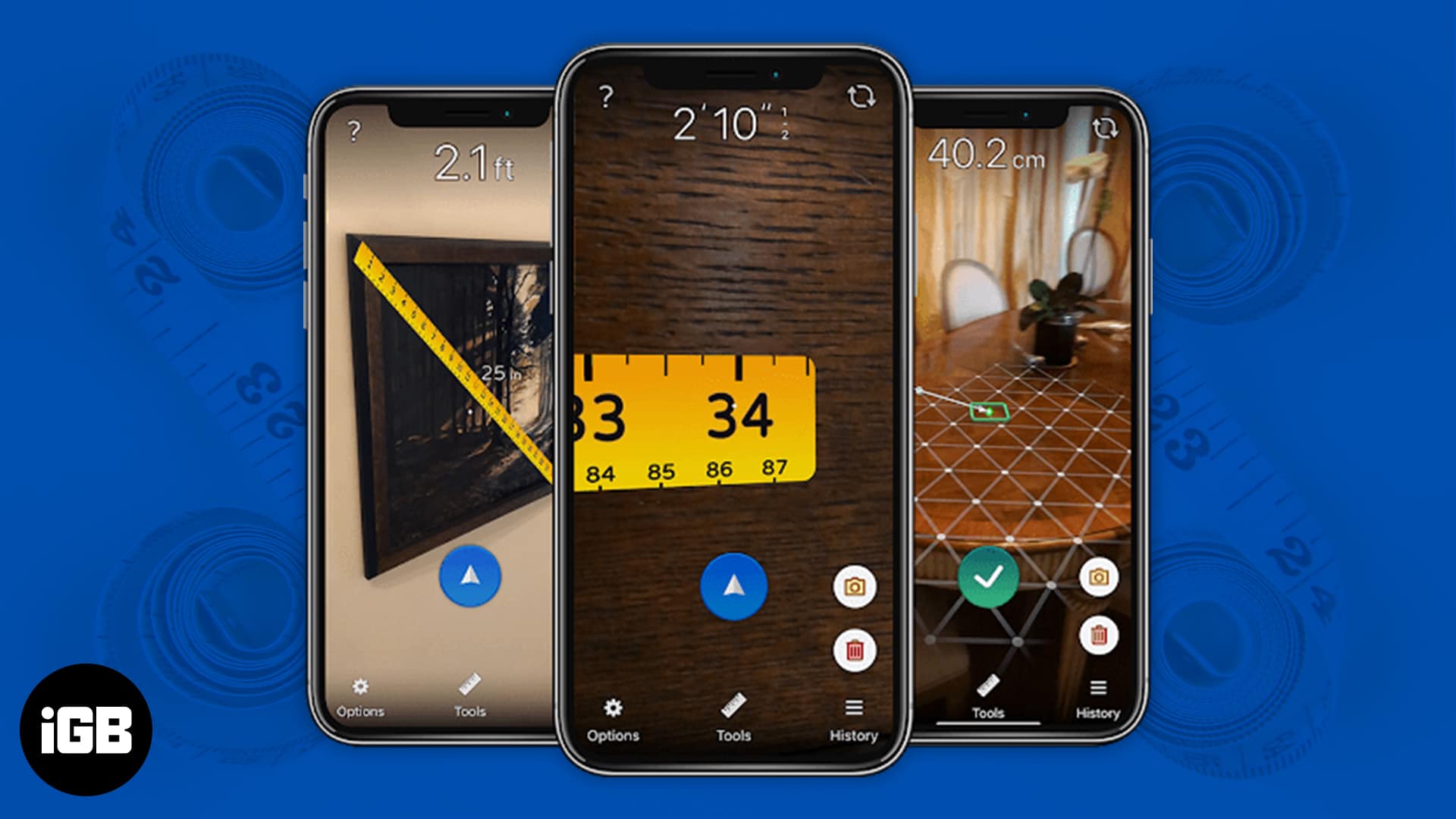
1. Distance Measure
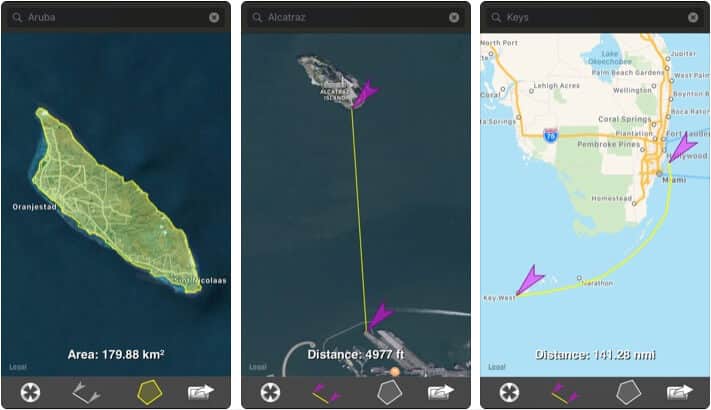
Distance measure is a great option if you want to measure large-scale distances. For instance, how far away is a particular town on the US west coast from Lima, Peru? The app reads in satellite maps from online. You can set waypoints between locations, and you’ll then get the distance.
The app supports both metric measurements in meters and kilometers and the imperial standard with feet and miles.
Price: Free
Download
2. EasyMeasure
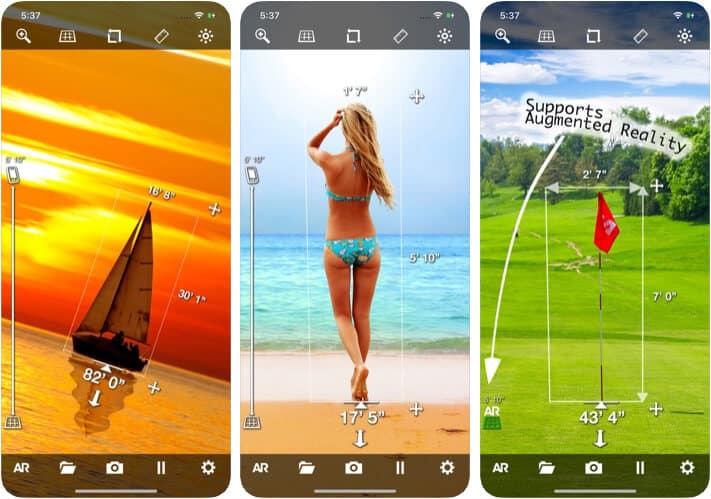
EasyMeasure, as the name suggests, makes distance measurement easy by using your iPhone’s AR capabilities. It allows you to look at any object in the world through the camera lens, then get an accurate reading of the length measurement. This means it can be used for small objects–points on a computer display–to large objects like buildings.
You can even use it to measure someone’s height. While the measurements, especially for larger objects, can be a little noisy, the convenience factor is important.
Price: Free (Height/Width Measurements: $3.99)
Download
3. Ruler AR
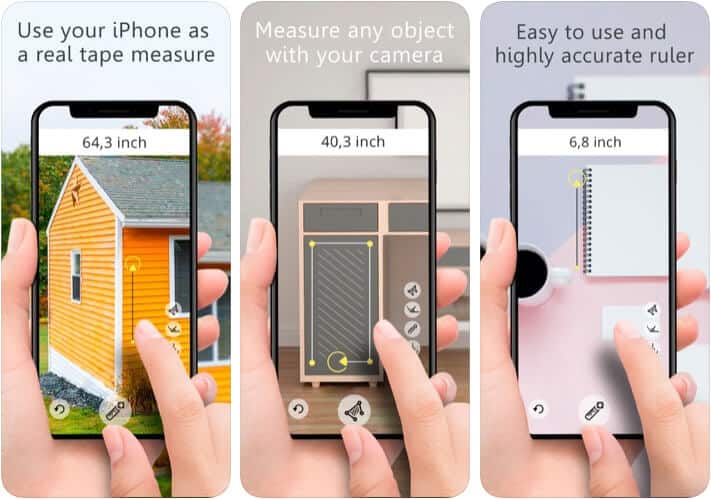
This app is interesting because it takes the EasyMeasure idea of an AR ruler and then develops it in an interesting direction. Essentially, it tries to replicate the experience of using a tape measure on your iPhone.
A tape measure lets you decide where the start and ending points of measurement are, and you can do this with Ruler AR. With the camera pointed where you want, simply select the points between which you want measurement, and you’ll get it.
Price: Free (Ruler Pro Features: $1.99)
Download
4. Ruler App + AR Tape Measure
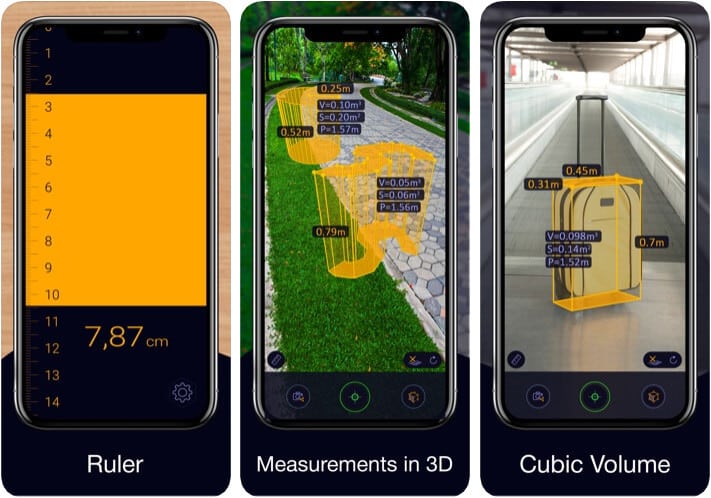
This app provides you with the best of both worlds. While AR measurement tools are great, it can be difficult to set them up. They can also give you inaccurate readings in low light. Meanwhile, standard ruler apps are great, but only for measuring objects smaller than your screen.
This app gives you both options. If you have a small object to measure, just use the ruler function. If you want to measure something larger, take out the AR tape measure and use your camera and AR capabilities.
Price: Free (Premium PRO: USD 9.99)
Download
5. PLNAR
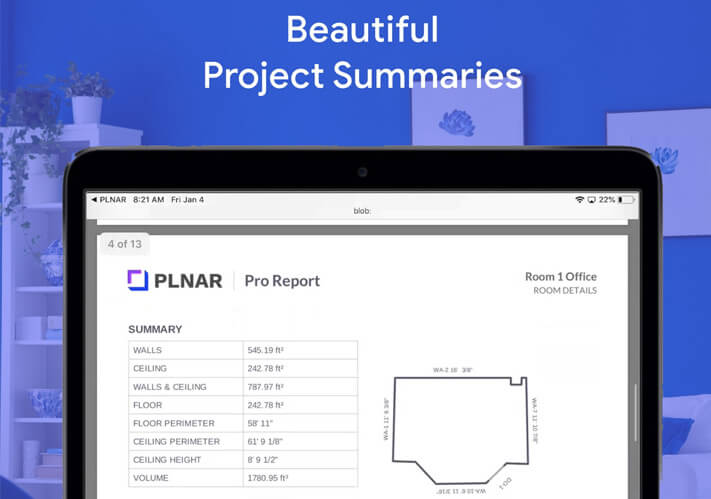
PLNAR takes the AR camera measurement concept and elevates it to new heights. PLNAR was built with professionals in mind and has support for creating 2D and 3D floor plans with the AR distance measurements it takes. It works similar to the other AR measurement tools: You point it at objects and then measure out the distance with the camera.
However, it also uses this information to create floor plans. This makes it useful for architects, people in the construction industry, and others who might have use for floor planning.
Price: Free
Download
6. AirMeasure
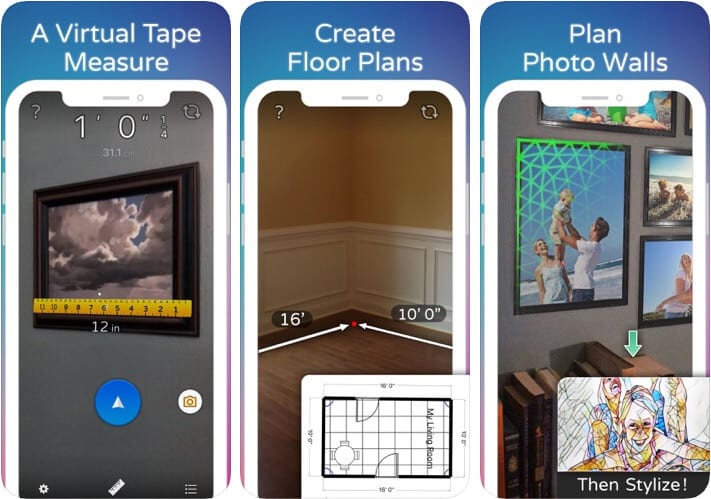
AirMeasure is another app that takes the AR measurement concept in different directions. It isn’t just a simple 2D tape measurement tool (although that is an option). It gives you over 15 different measurement modes that make great use of AR capabilities. For example, you can draw a 3D cube to find out if an object will fit inside that volume. You can use the specialized Person’s Height tool to determine someone’s height, while the Angle Measurement tool will give you the angle between different surfaces.
AirMeasure is special because it takes what other tools present as their main feature and gives them all to you at one time. You won’t have to download multiple apps since all measurement functions are right here.
Price: $0.99 (Large Tip: $7.99)
Download
7. Distance Tool
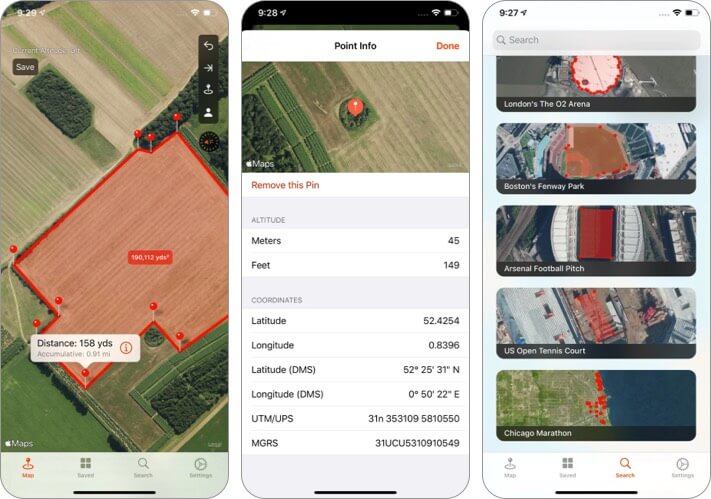
Here’s a tool that lets you measure the distance between points on a map quickly and easily. You can also calculate the area for non-overlapping polygons drawn. See the results in metric units for distance (meters, kilometers) and imperial units (yards, miles, feet for altitude).
It’s handy for mapping plots of land/home boundaries, agricultural fields, or any other distances/areas. You can also draw any shape on the map and calculate the area. Further, the Follow Mode allows you to calculate distance or areas simply by moving.
Price: $3.99
Download
8. Map My Walk
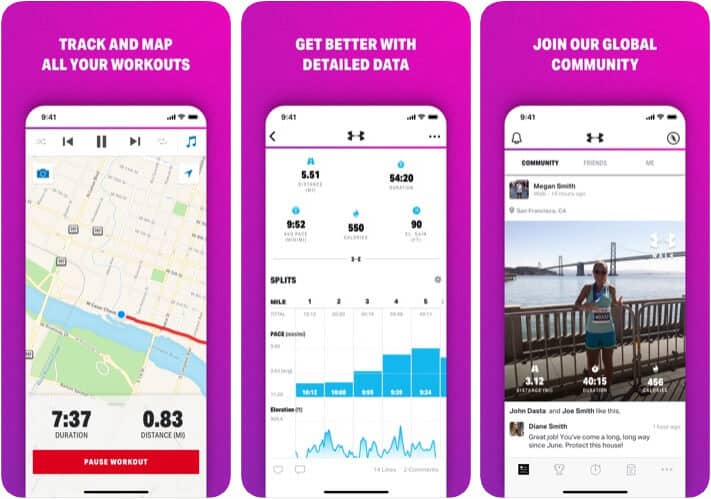
Sometimes you will need to measure longer distances, including the distance that you’ve covered in a walk. This is where Map My Walk is a great option. If you’re interested in measuring the distance between, say, your home, and the nearest supermarket, you can track your walk with Map My Walk. It’ll use GPS tracking to give you an accurate measure of the distance between these two locations.
It’s similar to Distance Measure but more appropriate for medium-scale distances. Map My Walk isn’t the only app that can be used to measure your walking distances, though. We have a roundup of the best walking and running distance tracking apps here.
Price: Free (Annual MVP: $29.99)
Download
9. Planimeter — Measure Land Area
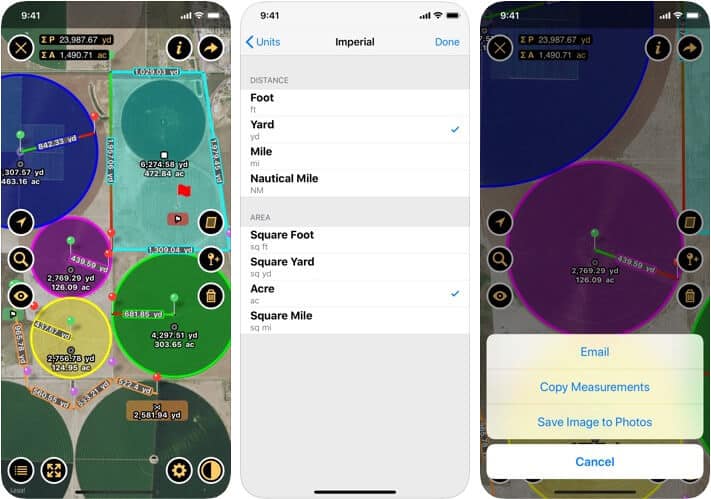
Planimeter is a useful tool if you’re interested in measuring distances for home projects. It uses satellite imagery to give you an overhead view of outdoor locations. You can then identify the different areas and lengths of objects in relation to one another.
If you’re planning on, say, building a shed in the backyard, Planimeter can help you identify how much space there is between your fences.
Price: $7.99
Download
10. Map Area Calculator – Marea
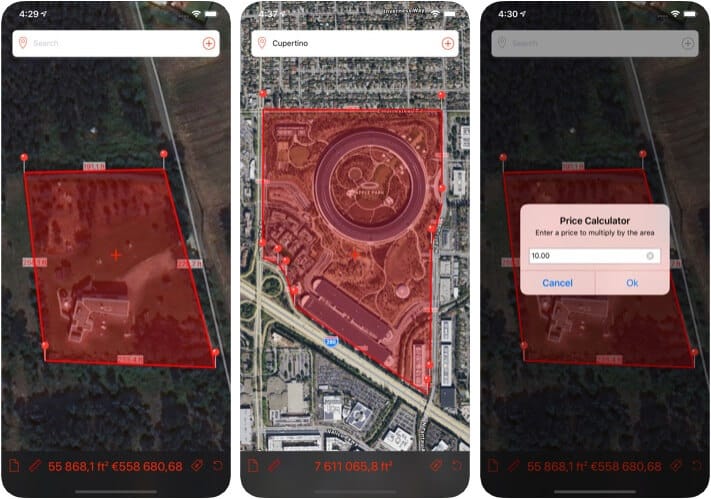
Despite the unusual name, Marea’s a surprisingly useful tool. It works similar to Planimeter in that it uses satellite imagery and then allows you to measure the areas of displayed surfaces.
If you want to find out the approximate size of a plot of land, for example, you can use Marea here. Map out the extent of the land on Marea, and it’ll show you how sizeable the plot is.
Price: Free (In-app purchase start at $3.99)
Download
That’s all for this list!
Which distance measuring app did you find the most useful? What kind of distances do you tend to measure? Be sure to give us your feedback in the comments below.
You may want to take a peek at::
